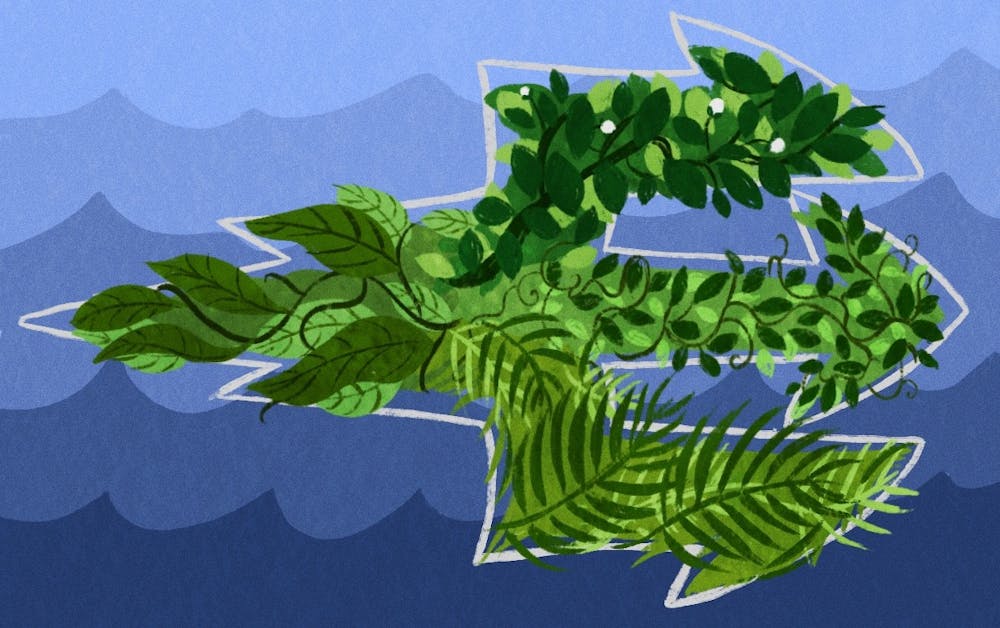ASU's School of Sustainable Engineering and the Built Environment is one of 42 organizations selected by the United States Environmental Protection Agency to help companies in Arizona conserve energy and water.
EPA announced the grant during Pollution Prevention Week. ASU's project was awarded $376,344 out of $9.3 million total distributed across the 42 organizations, according to a press release.
The grant will be used in a project aiming to provide technical assistance to industries throughout the state and develop training tools to promote more sustainable practices.
ASU's project is geared toward two sectors – food and beverage and aerospace manufacturing – with the ultimate goal of reducing their water and energy use.
Mackenzie Boyer, principal investigator on the project and a lecturer at the School of Sustainable Engineering and the Built Environment, specified that a past project is related to the new funding.
“Our 2020 project is building upon previous work,” Boyer said. “We’re taking what we learned and packaging that into educational materials so we can broadly educate the manufacturing sector on how to use existing technology to improve their operations.”
The previous work, a 2018 pollution prevention project, also worked with the food and beverage manufacturing industry to reduce pollution load emissions.
The overall goal of the 2018 project was to perform assessments that could help the industries reduce their environmental impact and educate the field in conservation technologies. The current grant is an extension of that effort.
The primary technology for both projects is water quality sensors developed at the end of 2018 after a series of consultations with the industry professionals. It measures certain chemical compounds and conductivity to determine if water is clean enough or needs treatment and helps companies understand the impact of their facilities.
“You can’t just take any sensor out there,” said Rain Richard, a graduate research assistant at the Swette Center for Environmental Biotechnology. “You have to take one that’s important to them and the analysis phase was to understand what water chemistry is important to these customers so we can create the right kit for them.”
The goal of the grant is to make the sensors mobile and enable researchers to go to any site and read data immediately. Clients can find waste runoff without the construction of permanent sensors and can have their water analyzed for them instantly.
"We thought outside the box, and put our technology in a box," said Richard.
The past project solely focused on the food and beverage industry, but the new grant expands the reach of the school and its technology to aerospace manufacturing.
"What’s neat about our project is taking something that’s existing, affordable and accessible to educate a new group to use that technology," said Boyer.
The second aspect of the project is an online training program targeted toward working business professionals.
The materials cater to those working in the food and beverage or aerospace manufacturing areas. It consists of information from previous assessments to explain water and energy issues that might interest them.
The School of Sustainable Energy has also partnered with the ASU Industrial Assessment Center to enhance the data for clients in both sectors. Project Manager Gamze Gungor Demirci explained the two programs have different roles in the project.
“We are partnering with Dr. Boyer’s team in this project by providing the energy portion of their assessments,” Demirci said. “We look at the major energy consumers and the processes in the facility to try and find ways to make them more efficient.”
A significant strength of the project is that the industries only stand to benefit from it. Money is the bottom line for businesses, but the technology does not make a significant monetary impact. The necessary steps toward less pollution are not only ethical but also cheap.
“This project is valuable because we can help them make some low-cost improvements to aid the conservation of water or energy,” said Boyer. “The tools are available and very beneficial; they just don’t know about it yet.”
Correction: A previous version of this story incorrectly named the School of Sustainable Engineering and the Built Environment. The article was updated at 10:00 a.m. on Oct. 9 to reflect this change.
Reach the reporter at amley@asu.edu and follow @MartyLey_ on Twitter.
Like The State Press on Facebook and follow @statepress on Twitter.




